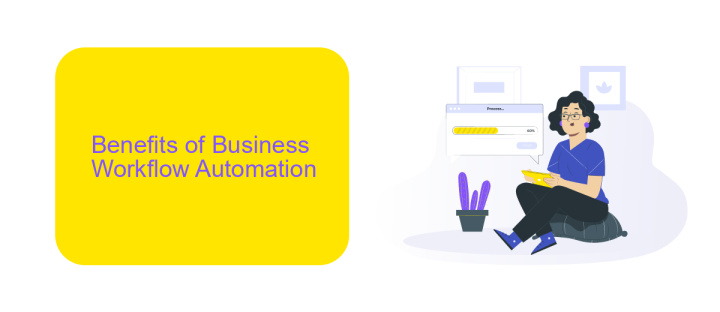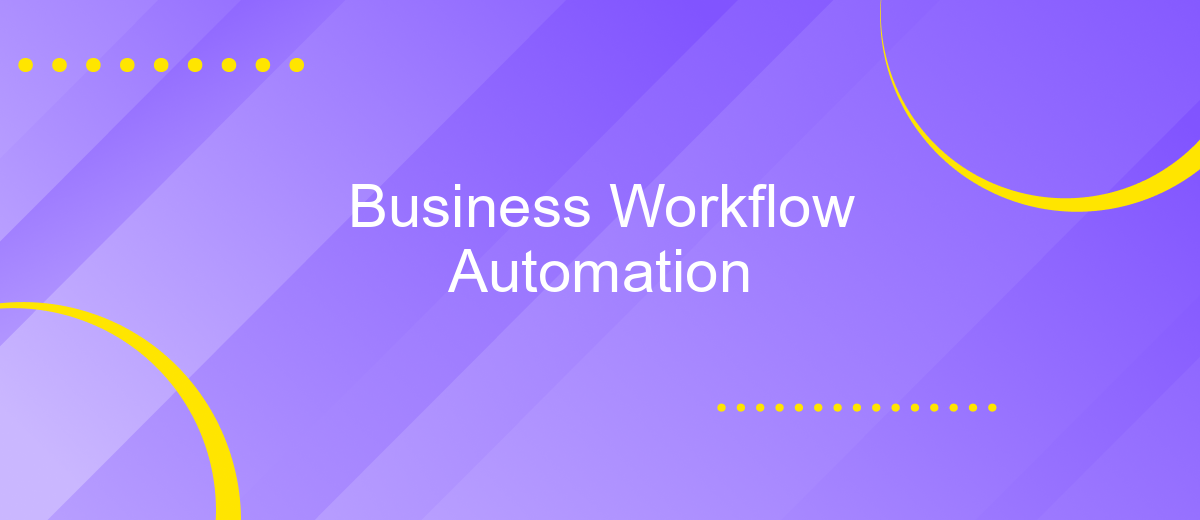Business Workflow Automation
In today's fast-paced business environment, workflow automation has become a critical tool for enhancing efficiency and productivity. By streamlining repetitive tasks and integrating various systems, businesses can reduce human error, save time, and focus on strategic initiatives. This article explores the benefits, implementation strategies, and best practices for adopting workflow automation in your organization.
Introduction to Business Workflow Automation
Business workflow automation is a transformative approach that leverages technology to streamline and optimize business processes. By automating repetitive tasks, companies can significantly reduce human error, improve efficiency, and save valuable time. This approach is instrumental in enhancing productivity and ensuring that business operations run smoothly.
- Reduces manual intervention in routine tasks
- Improves accuracy and consistency
- Enhances overall productivity and efficiency
- Facilitates better resource management
- Enables real-time monitoring and reporting
One of the key aspects of business workflow automation is the integration of various systems and applications. Tools like ApiX-Drive can play a crucial role in this process by enabling seamless integration between different software solutions. This not only simplifies the automation of workflows but also ensures that data flows smoothly across platforms, further enhancing operational efficiency.
Benefits of Business Workflow Automation

Business workflow automation significantly enhances operational efficiency by streamlining repetitive tasks and reducing the likelihood of human error. By automating routine processes, companies can allocate their resources more effectively, allowing employees to focus on higher-value activities that drive innovation and growth. This not only accelerates project timelines but also improves overall productivity, leading to increased profitability and a more agile business environment.
Another key benefit is the seamless integration of various business applications, which can be facilitated by tools like ApiX-Drive. This service enables businesses to connect different software systems effortlessly, ensuring that data flows smoothly between them. Such integrations eliminate data silos and enhance real-time decision-making by providing a unified view of critical information. Consequently, businesses can respond more quickly to market changes and customer needs, maintaining a competitive edge in their respective industries.
Types of Business Workflow Automation

Business workflow automation can significantly enhance efficiency and reduce manual errors in various organizational processes. There are several types of business workflow automation that cater to different needs and functions within a company.
- Task Automation: This involves automating repetitive tasks such as data entry, invoice processing, and email responses. Tools like RPA (Robotic Process Automation) are commonly used for this purpose.
- Process Automation: This type of automation focuses on streamlining entire business processes. For example, automating the approval workflow for purchase orders or leave requests.
- Integration Automation: This involves connecting different software and applications to work together seamlessly. Services like ApiX-Drive enable businesses to set up integrations without needing extensive coding knowledge, allowing for smooth data flow between systems.
- Communication Automation: Automating communication channels, such as chatbots for customer service or automated email marketing campaigns, to ensure timely and consistent interactions with clients and stakeholders.
Implementing these types of business workflow automation can lead to improved productivity, better resource management, and enhanced operational efficiency. By leveraging tools like ApiX-Drive for integration automation, businesses can ensure their systems work in harmony, minimizing the need for manual intervention.
Implementation of Business Workflow Automation

Implementing business workflow automation involves several critical steps to ensure seamless integration and efficiency. The first step is to identify repetitive and time-consuming tasks within your organization. By doing so, you can pinpoint areas that would benefit most from automation, thereby maximizing productivity and reducing human error.
Next, select the appropriate tools and platforms that align with your business needs. It's crucial to choose software that offers flexibility and scalability. For instance, ApiX-Drive can be an excellent choice for integrating various applications and automating workflows without requiring extensive coding knowledge. This platform allows you to connect different services and automate data transfer between them effortlessly.
- Identify repetitive tasks
- Select appropriate automation tools
- Configure workflows and integrations
- Monitor and optimize automated processes
After configuring your workflows, it's essential to continuously monitor and optimize them to adapt to changing business needs. Regularly reviewing the performance of automated tasks helps in identifying bottlenecks and improving efficiency. By leveraging tools like ApiX-Drive, businesses can ensure that their workflow automation remains effective and up-to-date.
Best Practices for Business Workflow Automation
To achieve effective business workflow automation, it is crucial to start by thoroughly analyzing and mapping out your current processes. Identify bottlenecks and repetitive tasks that can be automated. Prioritize automating high-impact areas first to maximize efficiency gains. Use clear and consistent documentation to ensure that everyone understands the new automated workflows, promoting smooth transitions and minimizing disruptions.
Integrating various tools and systems is essential for seamless workflow automation. Utilize services like ApiX-Drive to facilitate these integrations, allowing different applications to communicate and work together efficiently. Regularly monitor and review automated workflows to ensure they are functioning as intended and make adjustments as needed. Additionally, always keep security in mind by implementing robust access controls and regularly updating your systems to protect sensitive data.


FAQ
What is Business Workflow Automation?
How can I identify which processes to automate?
What are the benefits of automating business workflows?
How do I integrate different software applications in my workflow automation?
Is it difficult to set up and maintain automated workflows?
Do you want to achieve your goals in business, career and life faster and better? Do it with ApiX-Drive – a tool that will remove a significant part of the routine from workflows and free up additional time to achieve your goals. Test the capabilities of Apix-Drive for free – see for yourself the effectiveness of the tool.

